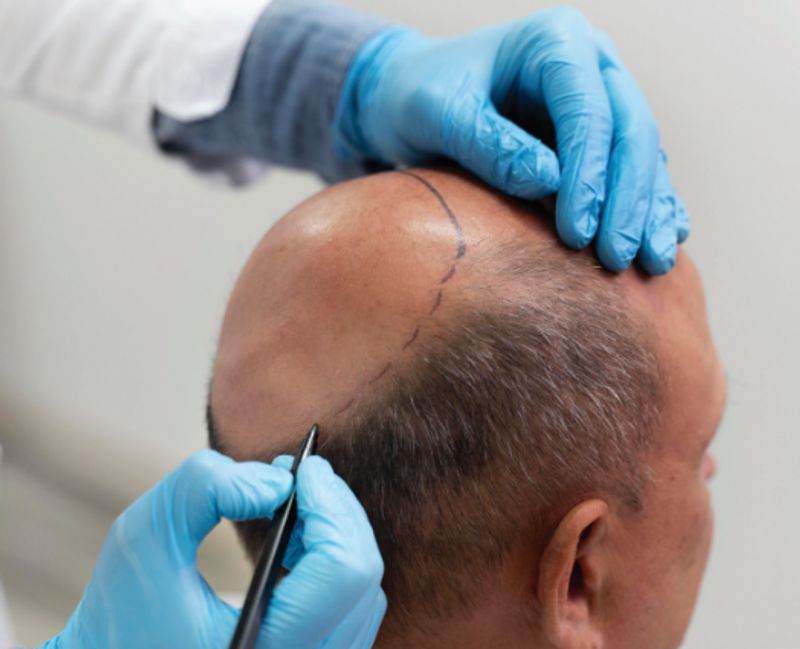Hair transplant procedures have gained immense popularity as a solution for individuals experiencing hair loss or thinning. One of the most common concerns for those considering this treatment is whether it is painful. Understanding the pain aspect of a Hair Transplant(زراعة الشعر ) can help potential patients make informed decisions about their treatment options. In this article, we’ll explore whether there’s any pain involved, what to expect before, during, and after the procedure, and the importance of proper care and preparation.
Importance of Hair Transplant Treatment:
Hair transplant surgery has revolutionized how people approach hair restoration. For individuals suffering from hair loss, especially due to genetic conditions like male and female pattern baldness, a hair transplant offers a permanent and natural-looking solution. By moving hair follicles from a dense area to a thinning or bald area, the procedure allows individuals to regain a fuller head of hair.
The importance of this treatment lies in its ability to restore confidence and self-esteem. As the hair grows back in the transplanted areas, patients often experience an improvement in both their appearance and their emotional well-being. Given the significant impact hair loss can have on mental health, opting for a hair transplant is often seen as a crucial step in restoring both appearance and confidence.
Risks of a Hair Transplant:
While hair transplant procedures are generally safe, they do come with some risks. These risks are typically rare but should be considered before proceeding with the treatment. Some of the common risks associated with hair transplants include:
- Infection: As with any surgery, there’s a small chance of infection, especially if proper aftercare is not followed.
- Scarring: Depending on the technique used (FUE vs. FUT), there may be visible scarring, though advanced techniques minimize this risk.
- Swelling: Some swelling of the scalp can occur post-procedure, usually subsiding within a few days.
- Shock loss: In some cases, existing hair may shed temporarily after the transplant, although it typically regrows within a few months.
It is essential to discuss these risks with your surgeon and understand the steps taken to minimize them during the procedure.
Benefits of a Hair Transplant:
Despite the risks, the benefits of a hair transplant far outweigh them for most patients. Some of the key benefits include:
- Permanent Results: Once the transplanted hair follicles settle, they continue to grow naturally, offering permanent results.
- Natural-Looking Hair: With modern techniques, hair transplants provide a natural appearance, blending seamlessly with existing hair.
- Improved Confidence: The boost in appearance can significantly improve self-esteem and confidence.
- Minimal Maintenance: After recovery, transplanted hair requires little to no maintenance, unlike other hair restoration methods like wigs or topical treatments.
The procedure’s long-term effects make it an excellent investment for those looking for a permanent solution to hair loss.
Preparing for a Hair Transplant Procedure:
Proper preparation before undergoing a hair transplant is critical to ensuring a smooth and successful procedure. Here are some essential tips to prepare for the treatment:
- Consult with an Experienced Surgeon: Choose a qualified and experienced surgeon who can assess your hair loss condition and determine the best approach for your transplant.
- Avoid Blood Thinners: Stop using any medications that may thin your blood (such as aspirin or ibuprofen) before the procedure, as they can increase the risk of bleeding.
- Avoid Smoking and Alcohol: These substances can interfere with the healing process and should be avoided in the days leading up to your surgery.
- Follow Pre-Operative Instructions: Your surgeon will provide detailed instructions for the day before the procedure, such as washing your hair and wearing comfortable clothing.
Being well-prepared will not only help minimize risks but will also ensure that you’re set up for the best possible outcome.
Aftercare: Ensuring a Smooth Recovery
Post-surgery care is crucial for a successful recovery and optimal results. After a Best Hair Transplant(أفضل زراعة شعر), you’ll likely experience some swelling, redness, or mild discomfort in the treated area. To ensure proper healing, follow these aftercare guidelines:
- Avoid Touching the Transplanted Area: Refrain from scratching or rubbing the newly transplanted area to avoid damaging the grafts.
- Take Prescribed Medications: Your surgeon may prescribe antibiotics or pain relief medications to prevent infection and manage discomfort.
- Wear a Hat: To protect the scalp from sun exposure, wear a loose hat or scarf for the first few weeks.
- Follow Up Appointments: Attend follow-up appointments with your surgeon to monitor progress and address any concerns.
With proper aftercare, the results of your hair transplant should become noticeable within a few months as new hair starts to grow.
FAQs About Hair Transplants:
Is the procedure painful?
Most patients report only mild discomfort during the procedure, as local anesthesia is used to numb the scalp. After the procedure, there may be some soreness, but it can usually be managed with prescribed medications.
How long does the procedure take?
The procedure typically takes 4 to 8 hours, depending on the number of grafts being transplanted.
When can I return to work?
Most patients can return to work within 1-2 days after the procedure, although it’s recommended to avoid strenuous activities for at least a week.
What are the chances of hair growth after a transplant?
The success rate of hair growth following a transplant is high, with most patients seeing visible results within 6 to 12 months.
Conclusion:
In conclusion, while some discomfort is associated with a hair transplant, the procedure itself is generally not painful thanks to local anesthesia. With proper preparation and aftercare, most patients can expect a smooth recovery and long-lasting results. Whether you're seeking to restore a natural hairline or address thinning areas, a hair transplant offers a reliable and effective solution. Be sure to consult with a qualified surgeon, follow all pre- and post-procedure instructions, and enjoy the transformation with confidence.

